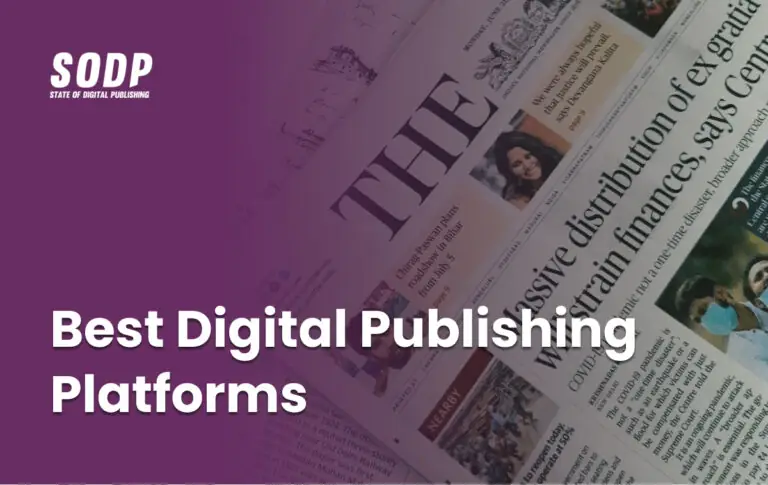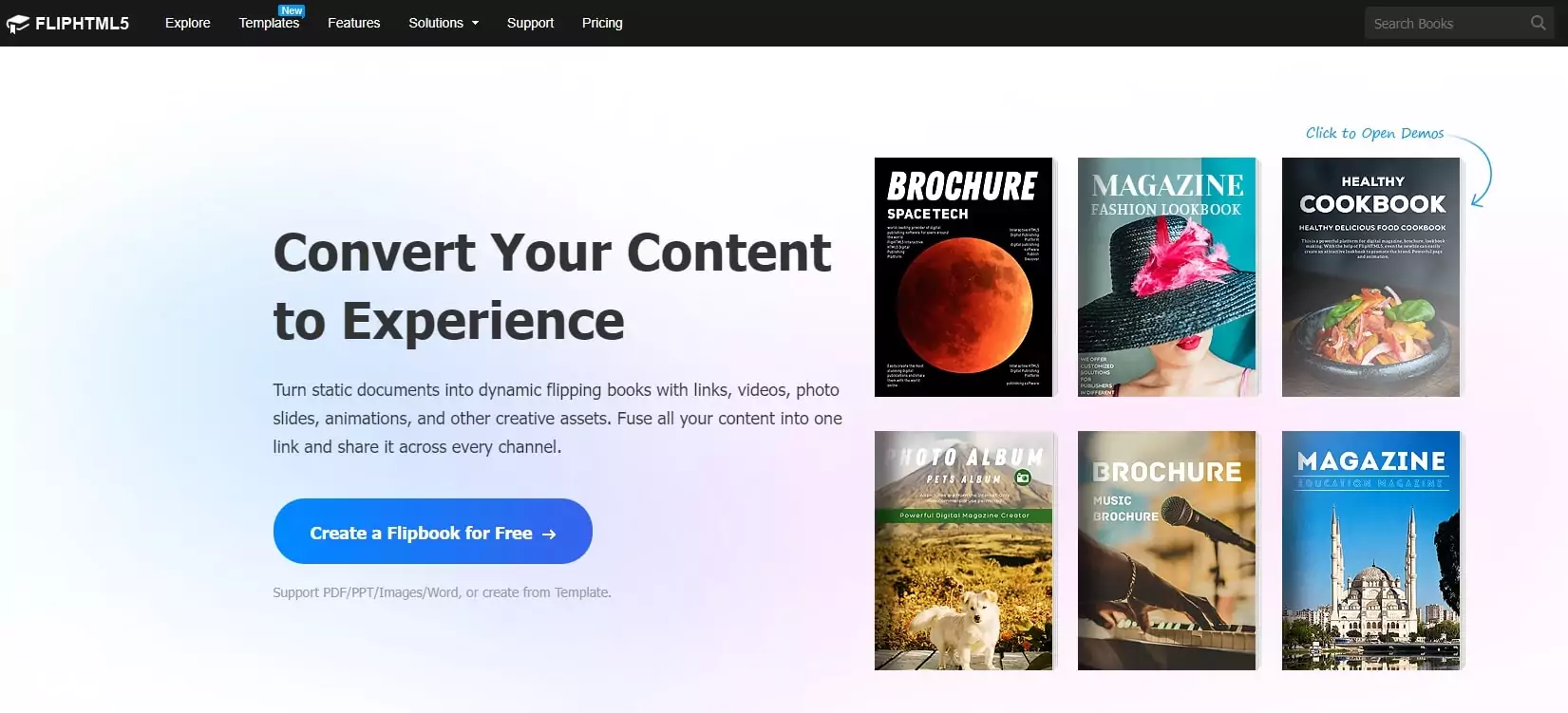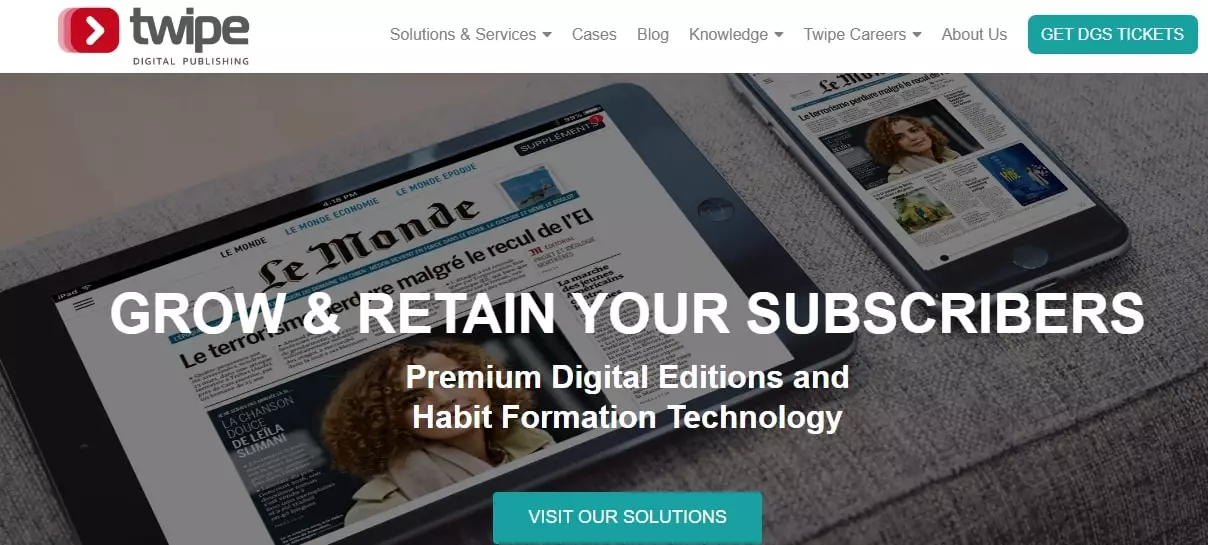With readers increasingly switching to consuming content online, publishers need to constantly evaluate whether their digital publishing platforms are helping them stay competitive.
With more than 64% of the world’s population consuming digital content in some form, the strategic importance of digital publishing is undeniable. Publishers are, however, facing increased competition for that audience.
Traditional print-first models have increasingly shifted to a digital-first approach. For example, of the New York Times’ 9.7 million subscribers around two-thirds are digital-only consumers. This is digital darwinism at work — businesses either adapt quickly to disruptive technologies or vanish.
Digital publishing platforms are at the heart of this transition, enabling the publishing of everything from news and evergreen articles to ebooks and white papers. An online publishing platform offers various services and functionalities, such as creating digital magazines, customizing and branding digital content, SEO tools, e-commerce solutions, providing multimedia content creation, integrating ads for additional revenue, and managing subscriptions.
What Is a Digital Publishing Platform?
A digital publishing platform is a piece of software that enables publishers to produce, edit and publish content online via one or many digital channels. An online publishing platform offers various features such as creating digital magazines, customizing content, and integrating ads for additional revenue. A tweet or a podcast is as much a digital publication as the digital edition of the Encyclopedia Britannica.
Traditionally, the term digital publishing has been most commonly associated with the web-based publishing of ebooks, reports, digital magazines, catalogs, flipbooks, etc. These could either originate in digital form or be converted from a physical format to digital.
Most digital publishing software help publishers drive traffic and track analytics. This means a legacy magazine publisher, such as Good Housekeeping, can use a digital publishing platform to create online editions that are as rich and immersive as the print versions while also being able to leverage the platform to promote the digital magazine.
How Do Digital Publishing Platforms Work?
A digital publishing platform supplies automated tools that allow individuals and businesses to produce, publish and distribute digital content. An online publishing platform provides tools for creating, publishing, and distributing content, as well as managing subscriptions and integrating multimedia content.
Most publishing platforms run on a subscription model. Once publishers create an account and subscribe to a plan, the platforms provide them with the necessary tools to compile and design their content. A single content template can be used to create content across multiple formats such as ebooks, flipbooks, white papers or reports.
A digital publishing platform also allows publishers to distribute their content online across numerous channels, a practice known as multi-platform publishing.
For example, The New Yorker is known for its satirical cartoons that have been a distinguishing element of its carefully curated brand identity over the roughly 100 years of its existence. Cartoons in fact, became so central to The New Yorker that it was often described as the “best magazine in the world for people who cannot read”. But in 2020 it branched into creating and selling audiobooks of its print editions.
How to Pick the Best Digital Publishing Platform
Choosing the right digital publishing platform can be a daunting task, especially with so many options available in the market. An online publishing platform should offer features like SEO tools, e-commerce solutions, and multimedia content creation. Here are some key criteria to consider when filtering the options:
- User-Friendliness: How easy is it to use the platform, both for publishers and readers?
- Customization: Can publishers customize the look and feel of their content, including branding, design and layout?
- Distribution: How does the platform help with the distribution and promotion of content across various channels?
- Pricing: What are the costs associated with using the platform, including any fees or revenue sharing?
- Analytics: Does the platform provide detailed analytics and insights on content performance?
- Integration: Can the platform integrate with other tools or services, such as social media or email marketing?
- SEO tools: Does it help publishers in enhancing their content’s performance in the search engine rankings pages (SERPS)?
- Multilingual support: Does the platform streamline the release of content in multiple languages?
- Embedded content: Does it allow for the inclusion of videos, images, links and interactive elements?
- Payment gateways: Can publishers use paywalls to charge for premium content?
Digital Publishing Platforms vs CMSs
Digital publishing platforms share similarities with content management systems (CMSs). After all, both a digital publishing platform and a CMS deal with producing and sharing digital content. An online publishing platform offers specialized tools for creating and distributing digital content, unlike a traditional CMS.
A CMS is primarily designed for managing content on a website. It allows users to create, edit, and publish content, as well as manage the layout and design of the website. CMSs are typically used by businesses, organizations and individuals to create and maintain websites that are updated frequently. Popular CMSs are Joomla and Drupal.
Digital publishing platforms, on the other hand, are designed specifically for creating and publishing digital content such as ebooks, digital magazines and interactive content. They offer tools for designing layouts, adding multimedia elements and publishing content to multiple channels such as websites, social media and mobile apps. Popular platforms include Joomag, Issuu and FlipHTML5.
It’s worth remembering that these are not rigorous definitions and the line between the two systems can become blurred.
WordPress, for example, is typically thought of as a CMS used for building websites and blogs. However, adding the Paperlit plugin to WordPress allows users to convert their blog posts on WordPress to digital magazines.
At the end of the day, the difference amounts to a matter of specialization, even if the two might have some overlapping capabilities. Our first choice for creating a flipbook wouldn’t be WordPress, while Joomag isn’t our first pick for creating a blog post.
 Edited by Andrew Kemp
Edited by Andrew Kemp 








































